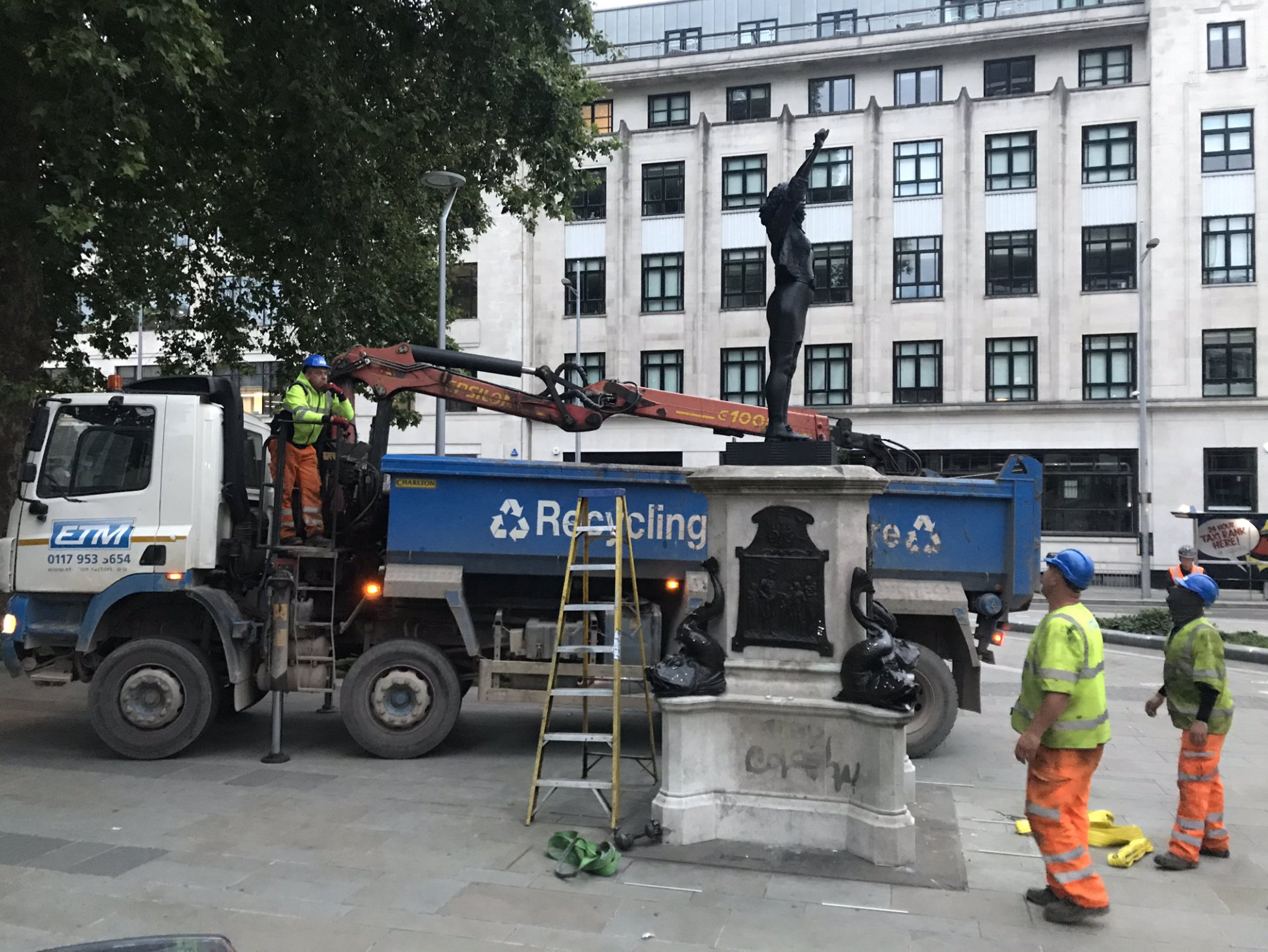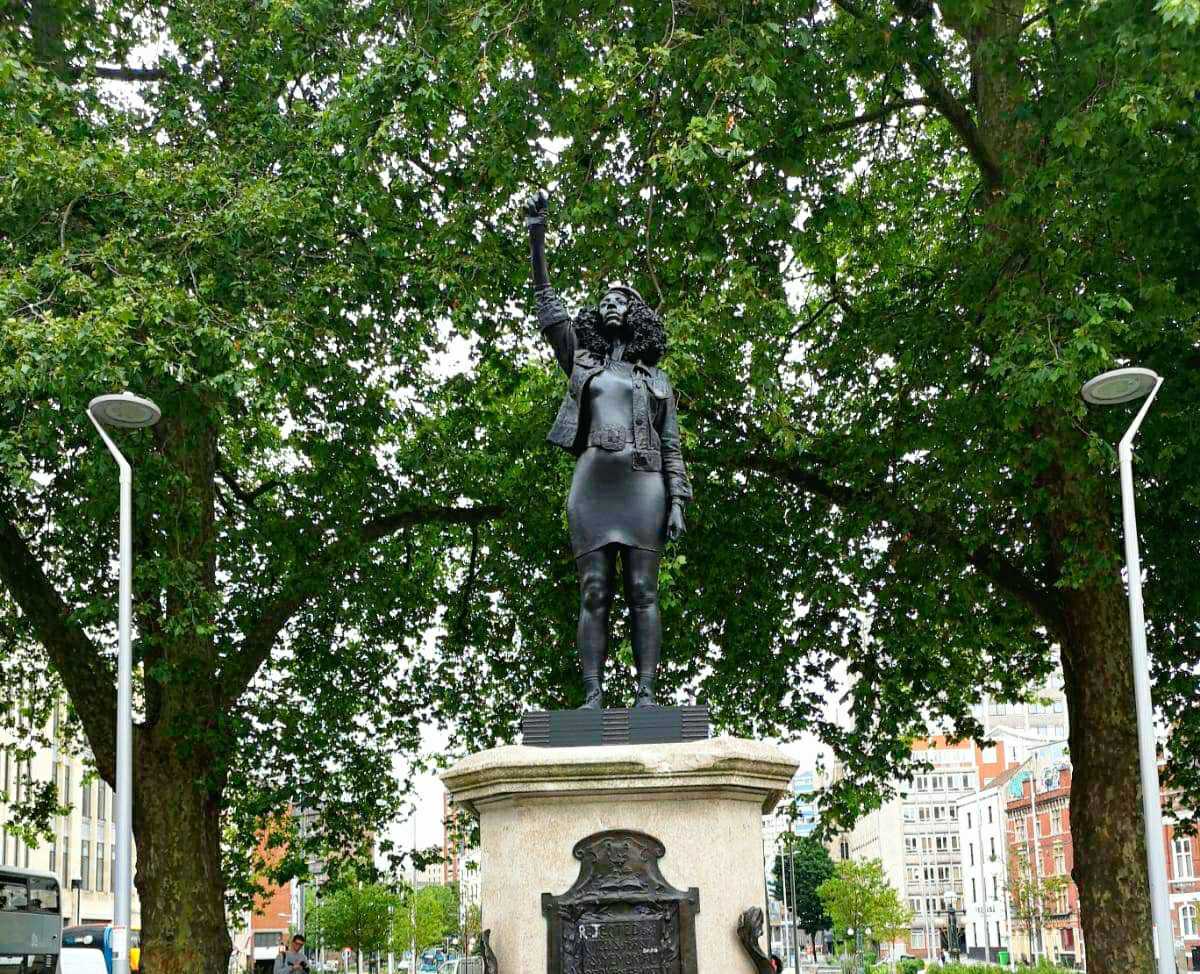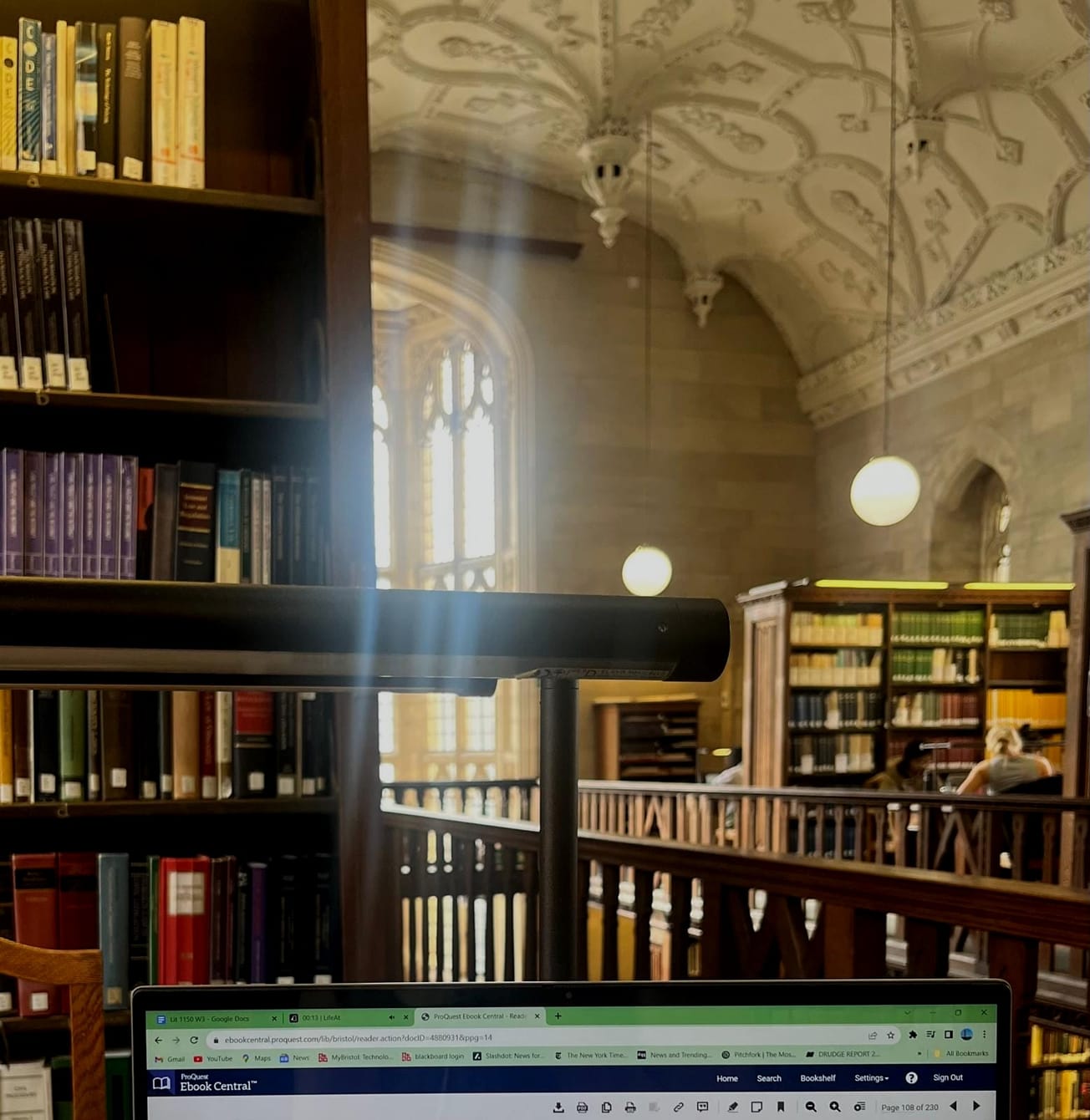By Gemma Blundell-Doyle, English, First Year
Edward Colston’s statue, pulled from its plinth by Bristolians reckoning with their city’s dark past, caught media attention across the globe and convinced others to destroy monuments that provoked the same unease. Almost as soon as the statue was plunged into the harbour, debate surrounding what should replace the relic from 1895 arose.
From the 7 June crowds flocked to the place where Bristol’s glorification of a slave trader was rejected.
At dawn on the 15 July they were met with a sculpture of a black female protestor who took the plinth with a raised fist during the protest – otherwise known as A Surge of Power (Jen Reid) 2020 by Marc Quinn.
Quinn’s access to resources allowed him to create and erect this installation with ease
Quinn is one of the most established artists of the 21st century. A member of a group of influential and successful creatives coined ‘Young British Artists’, his work has been displayed and sold for millions internationally.
His privileged upbringing – including an education at Millfield, then Cambridge – is starkly different to that of his subject Jen Reid. Quinn’s access to resources allowed him to create and erect this installation with ease.
After seeing a picture of Reid posted on Instagram he was able to invite her to his studio in London and begin work recreating the image within a week.

Quinn has previously used his art to question oppressive notions regarding social conceptions of physical normality and beauty. His sculpture Allison Lapper Pregnant, designed for the Fourth Plinth in Trafalgar Square, was hugely empowering for disabled rights in the UK. Nonetheless, critics have asked if his sculpture of Jen Reid stands for artistic activism or is simply a publicity stunt.
The manner in which it was erected (through a secret operation and without planning permission) has contributed to the controversy surrounding it and led to its removal by Bristol City Council less than 24 hours after it was put up.
Visually, it presents the change many Bristolians want to see, as it reflects a community ashamed by its historical existence as one of the major transatlantic slave trade ports.
As renowned British sculptor Thomas J. Price has argued, it would be more appropriate for a Black artist to be given the opportunity to display their work
Its removal was misjudged by many as a sign that the council did not stand behind this admission. However, the real issue is that Bristol’s residents were not consulted on what should be placed upon the empty plinth. Their involvement is crucial if a cityscape that reflects its residents’ values is to be built, and future frustrations are to be avoided.
Systematic racism thrives on the continual blocking of BAME people from positions of power within the systems that mould the society we live in, including our physical spaces. As renowned British sculptor Thomas J. Price has argued, it would be more appropriate for a Black artist to be given the opportunity to display their work on this platform.
It is necessary to prioritise the exposure of work that accurately reflects the views and experience of the Black community. Listening to the people affected by racism will tell us the best methods to dismantle it.
Marc Quinn’s Black Lives Matter statue is not solidarity https://t.co/9cL5xpHgYX pic.twitter.com/Li32B1CMwq
— ArtReview_ (@ArtReview_) July 30, 2020
In the days that followed the toppling of the Colston statue, many artists, including Bristol’s Banksy, put forward suggestions as to what should be put on the plinth. Bristol Mayor Marvin Rees, with an elected committee, should have examined these and voted on the best option.
A key fact to consider in this decision should have been the ethnicity of the artist. In a 2015 Hardtalk podcast, Quinn stated ‘I am like a history painter, I’m showing the world as it is now, I’m bringing things that exist in the news into the world of art’. The old adage ‘history is written by the winners’ rings true in this context.
It is necessary to prioritise the exposure of work that accurately reflects the views and experience of the Black community.
The removal of Quinn’s sculpture was as important as its installation, revealing Bristol is still navigating how (or if it is even possible) to remedy its past
Many would consider Quinn a ‘winner’ due to his established position within the art world. His journey to this acclaim will have been aided by his identity as a straight, white, male.
I doubt that Quinn intentionally sought to masquerade as an ally in order to boost his public profile, but it is likely his white privilege stopped him from considering if he should step aside and allow a Black artist to display their work – something they have been historically denied in an elitist industry.
Currently, the Colston statue is expected to be placed in a Bristol museum, with the decision made to preserve the graffiti on it. The toppling of the Colston statue powerfully depicted the people of Bristol rejecting the narrative that Colston was a philanthropist and public figure that should be celebrated.
Colston statue torn down during Bristol Black Lives Matter protest
Statue of Black Lives Matter protester erected on Colston plinth
Sculpture of BLM protestor Jen Reid removed from Colston plinth
As the artist Ken Lum notes, the traditional function of monuments ‘has been to activate or even sustain a certain narrative of memory which people of influence have deemed worthy or important to maintain’. Therefore, perhaps the creation of monuments is too closely linked to propaganda to ever serve underrepresented communities.
The removal of Quinn’s sculpture was as important as its installation. It revealed Bristol is still navigating how (or if it is even possible) to remedy its past.
Quinn has rightfully said he will repay the council for the cost of his statues’ removal, donate any profits from its sale to charity and has offered a maquette of the sculpture to the Bristol Museum. But is this enough?
There are Bristol charities that would benefit massively from monetary donations and Quinn opening up his network to make the arts more accessible to BAME people including Black South West Network and Trinity Bristol.
Quinn’s sculpture was only a temporary installation. Despite the many different interpretations of the intentions behind this installation, one thing is certain: he should be aiming to make a permanent and sustained positive change to Bristol’s Black community.
Featured: Emma Fernandez Schmidt / Martin Booth
What did you make of Marc Quinn’s statue? Was the work one of being an ally or of not recognising white privilege?








